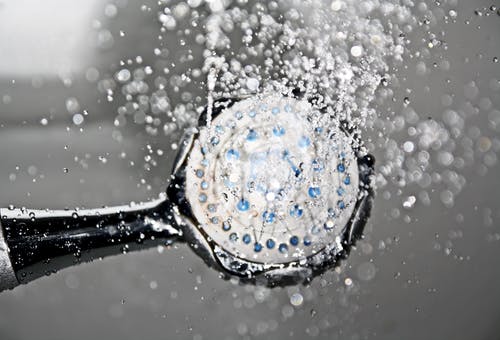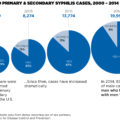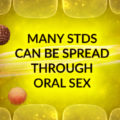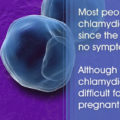Sexually transmitted diseases (STDs) are infections that are passed from one person to another through sexual contact. The causes of STDs are bacteria, parasites, yeast, and viruses. They are spread through contact with infected body fluids such as blood, vaginal fluids, or semen. They can also be spread through contact with infected skin or mucous membranes, such as sores in the mouth. You may be exposed to infected body fluids and skin through vaginal, anal or oral sex. Anal sex is very risky because it usually causes bleeding. Sharing needles or syringes for drug use, ear piercing, tattooing, etc.
Anyone who has had sexual contact can get infected with a sexually transmitted disease. Men and women of all ages, regions, ethnic backgrounds, and economic levels can get STIs. According to the Center for Disease Control (CDC), there are about 20 million new STIs diagnosed every year in the United States and people between 15-24 years of age have half of them. Anyone at any age can get an STI; however, young people (male and females) who have intercourse with multiple partners, or have a partner that has many sexual partners, and gay and bisexual men are at a greater risk than others. Additionally, teen girls are more likely to become infected with chlamydia than adult women are. Examples of STD include:
- Chlamydia
- Gonorrhea
- Hepatitis B
- Herpes
- HIV/AIDS
- Human Papillomavirus (HPV)
- Molluscum Contagiosum
- Pubic Lice (“Crabs”)
- Scabies
- Syphilis
- Trichomoniasis
- Pelvic Inflammatory Disease (PID)
Does taking a shower after sex help prevent STDs?
Previously available evidence suggests that washing after sex can actually increase the risk of acquiring HIV. In addition, several studies reported that heterosexual men and women who report regularly washing after sex are more likely to acquire HIV than individuals who do not. However, a regular shower using soap, hot water, and regular shampoo and conditioner can reduce the risk of sexually transmitted diseases.
A new study carried out by researchers at the Harvard Medical Center have discovered a link between cleanliness and STD prevention. According to Dr. Richard Long, after sex with a partner of ‘unknown STD status,’
“Basically, it’s really quite simple,” said Long. “If you’re happily humping away with some boy or some girl whose sexual history you don’t know, or who you cannot completely trust to be telling you the truth, just immediately go and take a hot shower after intercourse. If you can manage to get into the shower within 2 minutes of orgasm, you are nearly 100% likely to wash away any STDs you may have been at risk in contracting.”
This assertion is supported by Ron Jeremy’s book, and the Hedgehog who supports the notion that washing up immediately after sex prevents couple from sexually transmitted diseases.
However, one long held notion that urinating after sex prevents sexually transmitted diseases have been described as a sexual myth. According to Dr Basil Donovan of the National Centre in HIV Epidemiology and Clinical Research of the University of New South Wales in Australia, this notion “is a widely held belief among soldiers”, but “has never been clinically proven”. He adds that this idea is merely “part of the rich area of sexual myth”. READ: Blue Wafflé Disease: WebMD Separates Facts From Fiction
How to Prevent STD
According to the American Sexual Health Association, there are many things you can do to reduce your risk of contracting a sexually transmitted disease or infection (STD/STI). These Include;
Abstinence
“Abstinence” is a fool-proof way to avoid the risks of sexual activity, but what exactly is abstinence? There are different definitions for abstinence. Someone who chooses abstinence may have sexual feelings but chooses not to have sex with others–no oral, vaginal or anal sex of any kind. Someone who practices sexual abstinence does not run any risk of contracting an STI or having an unwanted pregnancy.
Mutual monogamy
Mutual monogamy means only having sex with your partner. This is another way to limit exposure to STIs. If neither partner has ever had sexual contact of any kind with another person, there is no risk of STIs. If either person has ever had sex with anyone else, we recommend getting tested and, if necessary, treated for STIs at the beginning of each relationship.
Communication
Communication in a relationship is extremely important because it acts as the judge, jury and executioner which has the final say on whether your relationship lives or dies. Talk with your partner about STIs, sexual health, and prevention prior to sexual activity. Open communication fosters trust and respect among partners and is a key aspect of reducing the risks for STIs.
Get Tested
Most of the time, STDs have no symptoms. Testing is the only way to know for sure if you or your partner has an STI. Get tested and ask your sexual partners to get tested before you start having sex.
Low-risk and high-risk activities
High-risk sexual behavior puts people at risk for sexually transmitted infections (STIs), unplanned pregnancy, and being in a sexual relationship before making up your mind or being mature enough to know what makes a healthy relationship. Low risk activities include open mouth kissing (French kissing) and hand-to-genital contact. Activities that are higher risk for STD/STIs include oral sex (genital or anal), vaginal intercourse and other genital-to-genital contact, anal intercourse and sharing sex toys with no barriers. Both vaginal intercourse and any contact between a penis and a vagina are high risk for pregnancy and STD.
Practice Safe sex
Safe sex is sexual activity using methods or devices such as condoms to reduce the risk of transmitting or acquiring sexually transmitted infections, especially HIV. “Safe sex” is also sometimes referred to as safer sex or protected sex to indicate that some safe sex practices do not completely eliminate STI risks.
Avoid alcohol and recreational drug use
Alcohol and drug use can reduce our ability to make good decisions and make it less likely that we will actually implement the safer sex decisions we had made previously. It may also make us more likely to be coerced into participating in an activity without being able to give our full and informed consent. In a study of 948 newly arrested youths undergoing criminal justice intake processing in Tampa, Florida, more than 19 percent of girls and 11 percent of boys tested positive for chlamydia, gonorrhea, or both infections. Dr. Richard Dembo and colleagues from the University of South Florida, Tampa, and Temple University, Philadelphia, found correlations between the youths’ prevalence of these sexually transmitted diseases (STDs) and their cocaine drug test and marijuana use, as confirmed by urine tests.






